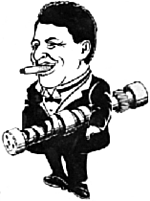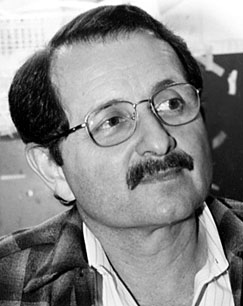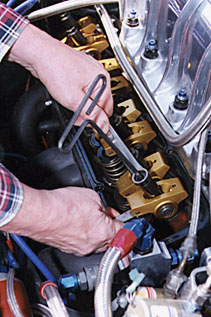|
|
|||||
|
|||||
I’ve read your article in Drag Racing Online and I’m in total agreement with you that published information today leaves a lot to be desired. I have a question for you concerning cam timing V-8 engines in general. I’m a Mechanical Engineer by trade and I have a good working knowledge of internal combustion engines. I recently assembled the engine for my Super Comp dragster and while degreeing the cam I experienced much confusion. The cam specifications are: at 0.050 lobe lift, intake opens at 29 BTDC and closes at 65 ABDC and the exhaust opens at 67 BBDC and closes at 31 ATDC. Lobe center of 108. After installing the camshaft and setting the degree wheel to zero at TDC, I recorded the following: intake opened at 29 BTDC and closed at 67 ABDC and exhaust opened at 67 BBDC and closed at 33 ATDC. By calculating the theoretical lobe centerline I get 109. I was told to install this cam 4 degrees advanced. My question is should I move the cam to obtain a calculated lobe center of 104 or just change the timing event of the intake opening point to 33 BTDC? Of the four different timing events, which is more important, “intake opening,” “intake closing,” “exhaust opening,” or “exhaust closing?” Any information you can pass on about this subject I would greatly appreciate. Thanks,
Thank you for your question about cam timing events where slight discrepancies exist between theoretical and actual numbers. If you posed your question to several people, it is quite possible that you could end up with as many answers. Although mine will surely not be the last word on the subject, I will endeavor to be direct and forthright. The scenario you described in not uncommon. Discrepancies of 1 or 2 degrees suggest profile variations of .002”/.004”. Is this error? Yes. Is it important? Perhaps not. Always remember that errors can be either qualitative (quality related) or quantitative (there is a variation from the theoretical ideal, but the integrity of the original design is maintained). My guess is that in this case, it could be a bit of both. But I would certainly not consider this a serious discrepancy. Perhaps the following actual case history experience on the Isky dyno will explain why. Many years ago (in the early 1960’s) a product call the P&G valve gapper was introduced. Utilizing a dial indicator, it claimed impressive results of up to 1/10th quicker elapsed times by virtue of its higher accuracy in setting valve lash compared to the conventional use of a feeler gauge. The gentleman who created the tool was persistent in pressing for a demonstration on Isky’s engine dyno. After initially resisting, Ed (Isky founder Ed Iskenderian) finally agreed to a before and after test. A 327 c.i. Chevy V9 engine was on the dyno at the time and Robert “Bones” Balough, driver of John Mazmanian’s A-Gas supercharged coupe was our operator. Ed’s instructions to him were simple: “Set the valves as close as possible with the feeler gauge, Bones, and then let this gentleman have his turn.” Bones did just that, establishing a baseline HP curve. The tool’s creator couldn’t wait to show what his product could do. He promptly re-adjusted each valve pointing out each half to one-thousandth inch (.0005-.001”) discrepancy as he went through the engine. With great anticipation, the engine was fired up and tested again. The results? Virtually no change! “Now,” Ed said, “Let’s have some fun. Bones, I want you to adjust each valve up or down .001-.004” so that essentially every valve has a different lash setting.” This of course meant that there was also a slight variation of perhaps 1 or 2 degrees in valve timing for each cylinder. Ed’s hunch was that the result would be no worse than even. Not surprisingly, he was right, as the engine actually made between 2 and 3 more horsepower with the valves adjusted this way! The lesson in this case was that relatively correct valve timing was at least as good as the absolutely precise timing. Although you may not duplicate this result with every engine, clearly it is possible to over-emphasize the efficacy of dead-on accuracy in valve timing. Now Kurt, to answer your specific questions. Of the four timing events, the intake closing point is by far the most important because it regulates your cranking compression. (Reference Tech Tips #2001 and #2002 on the Isky website www.iskycams.com) As to whether you should move the cam to the calculated 104-degree intake centerline or change the intake opening point to 33 degrees Before TDC — to accomplish this 4 degree advancing of the camshaft, use either method you are comfortable with. As the story above points out, in one’s pursuit of higher performance, splitting hairs with valve timing is not a panacea. Your time and energy would be better focused elsewhere. Have a cam or valve train question?Send it to |
|||||
|
Copyright 1999-2001, Drag Racing Online and Racing Net Source |
|||||




 Dear
Kurt,
Dear
Kurt,